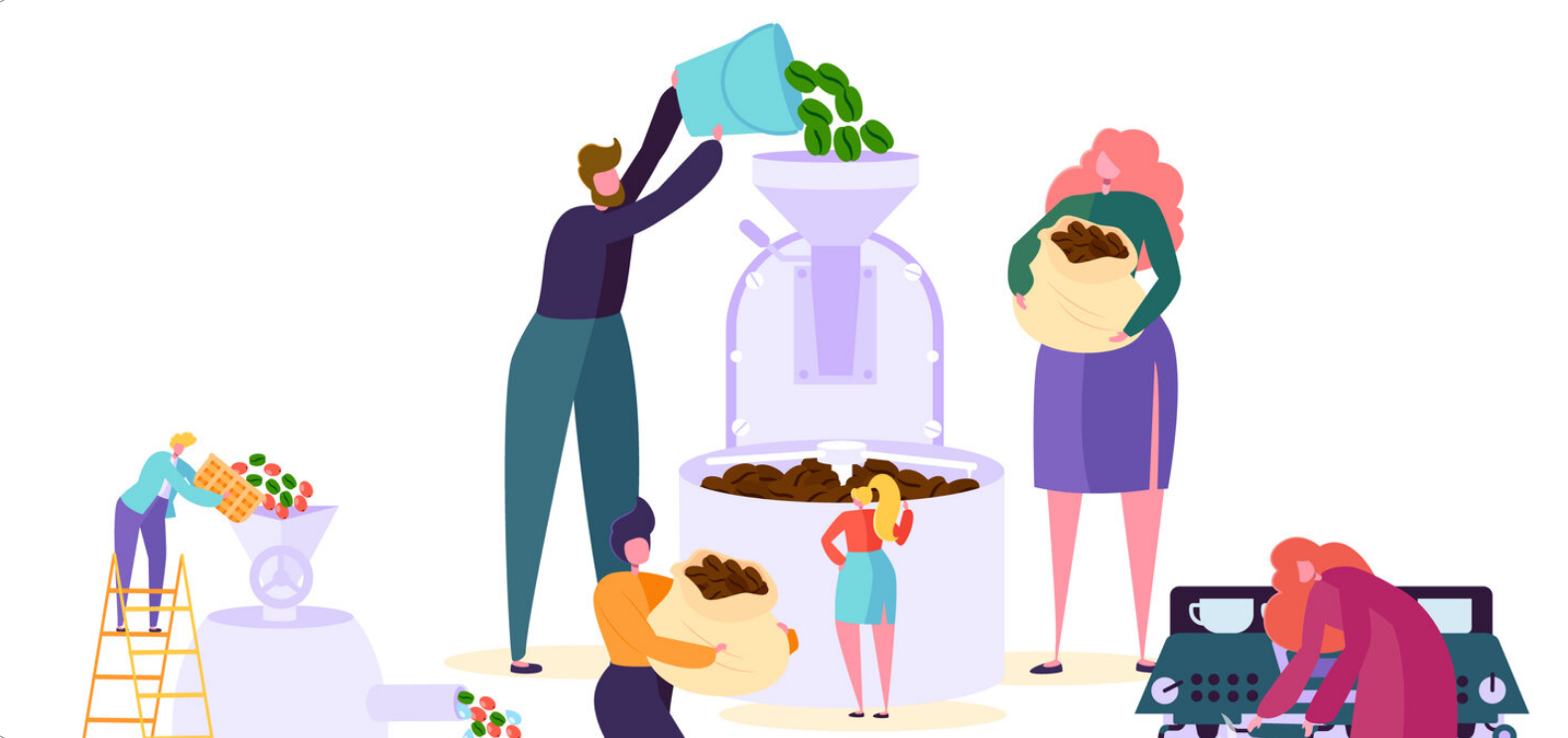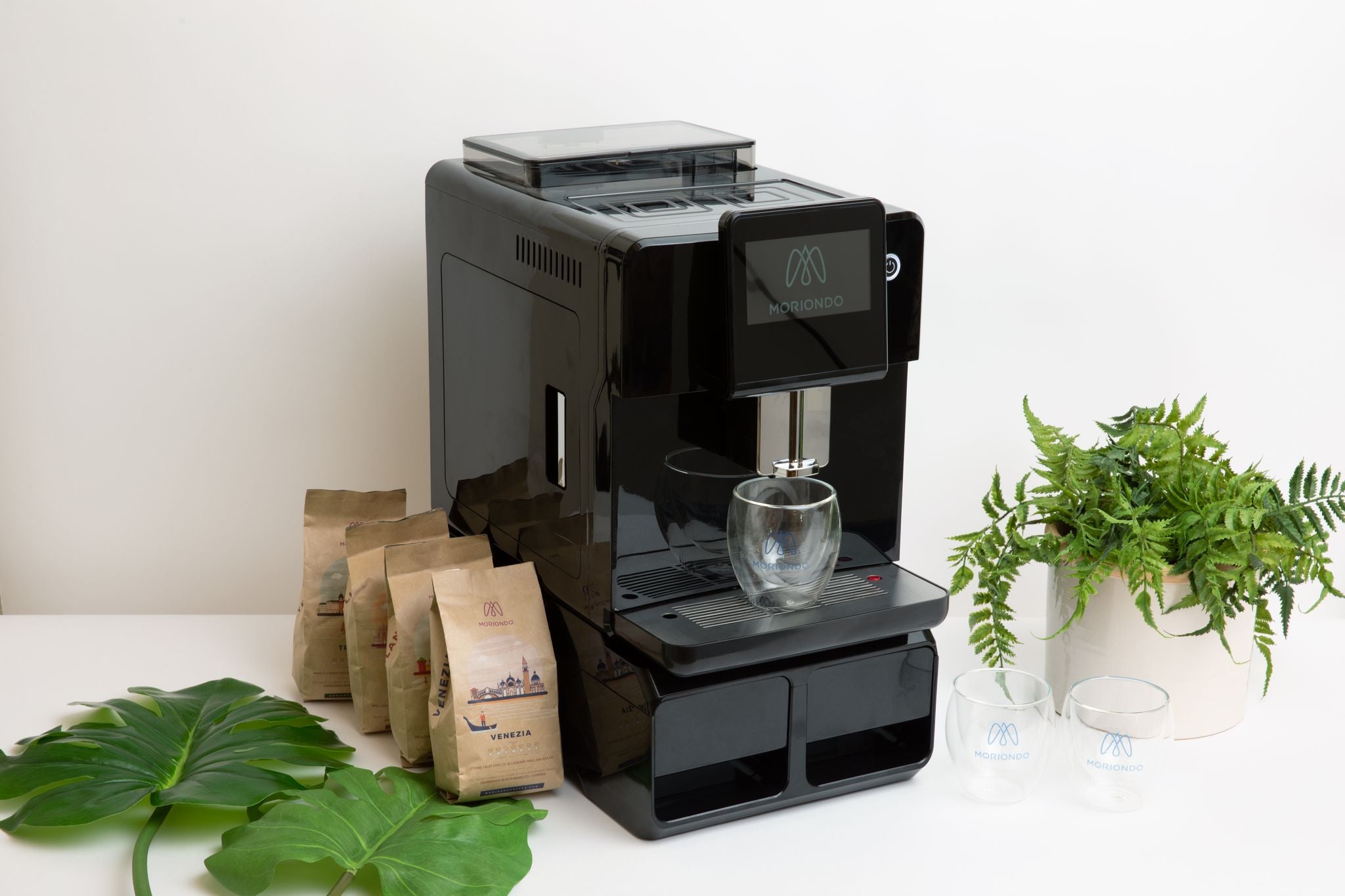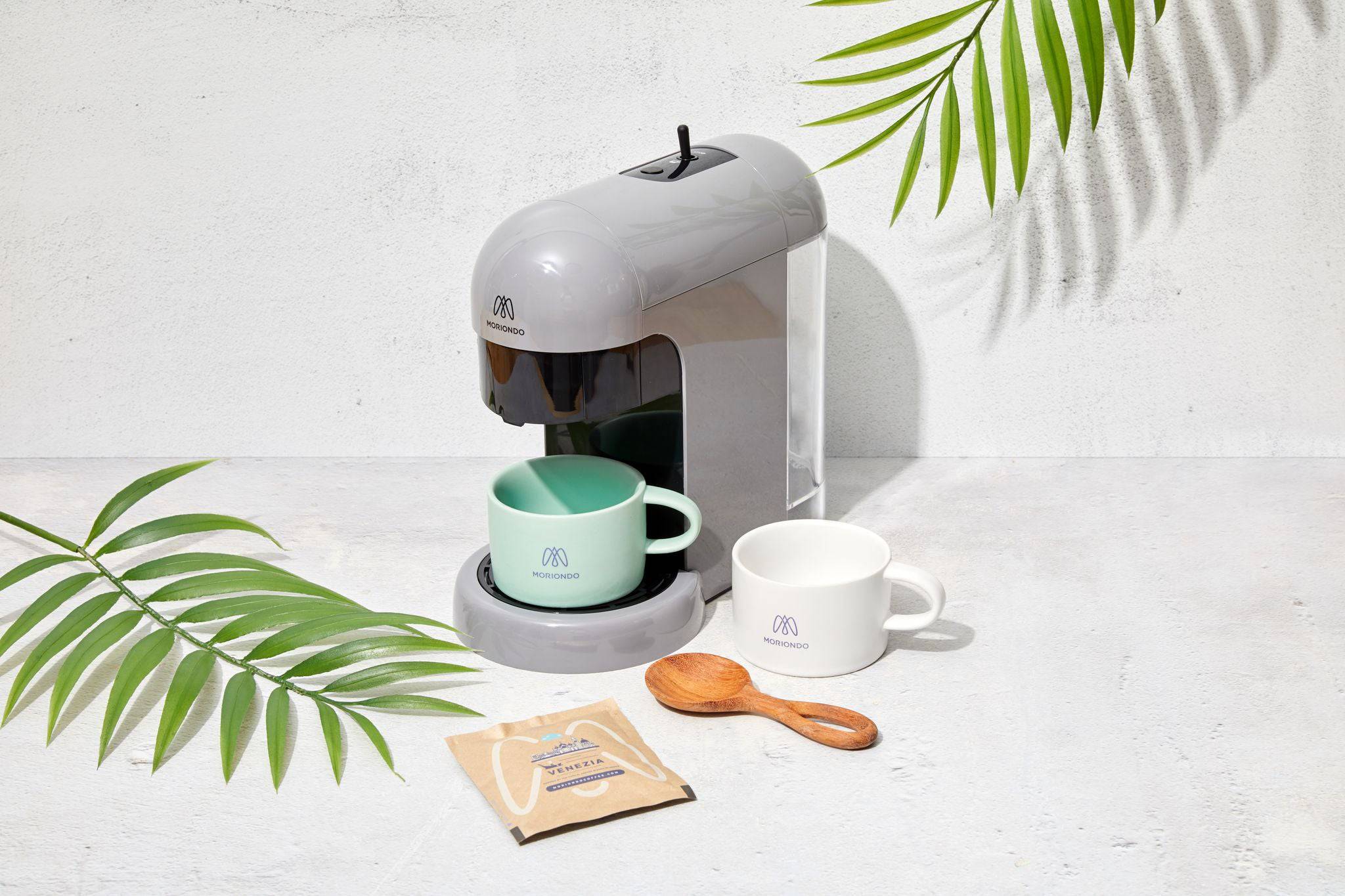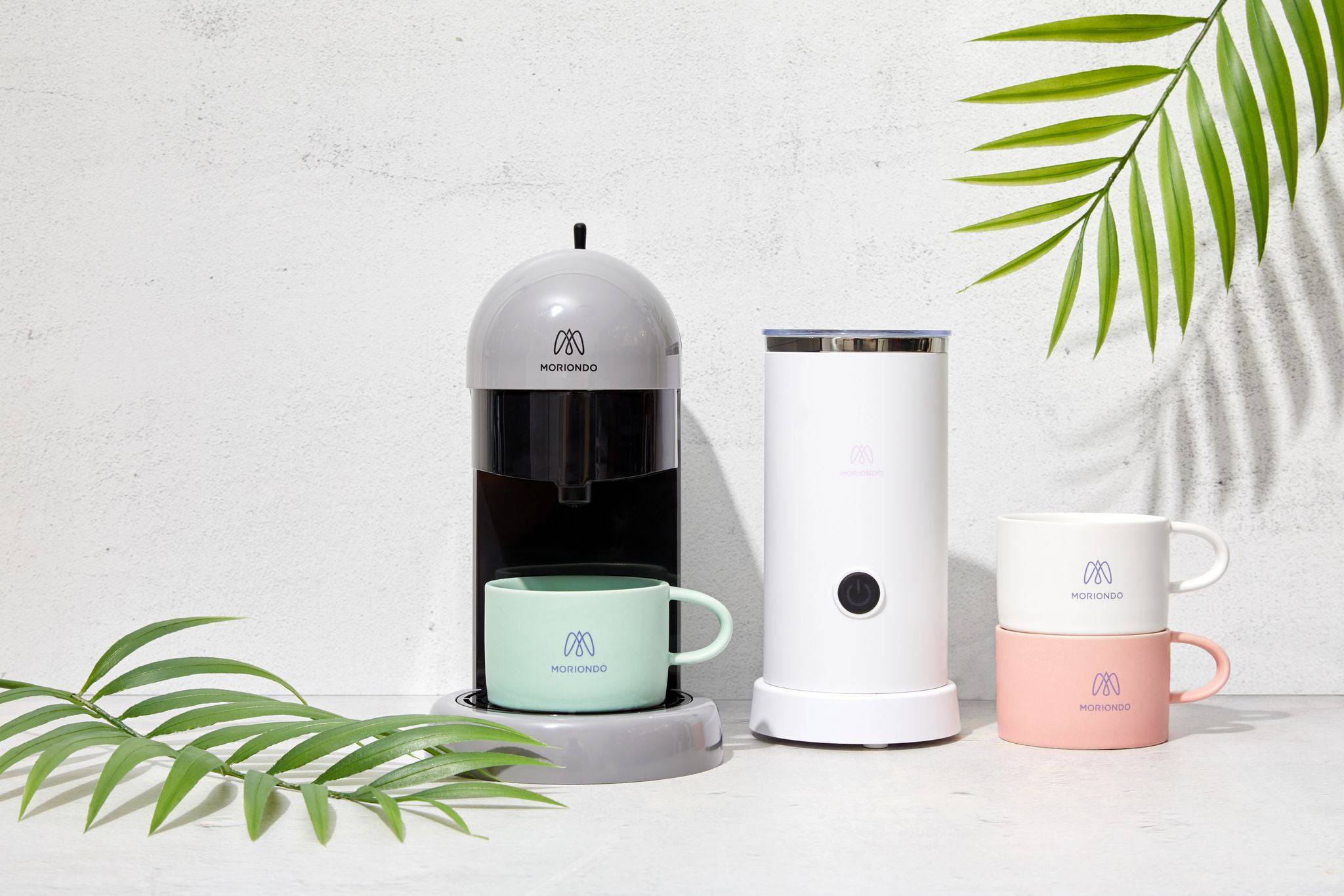Featured Blog Post
A Complete Guide to Coffee
The Different Types of Coffee Beans, Regions, Roasts and Brewing Methods
To understand how different types of coffee vary, it helps to understand the different steps in the production of coffee, each of which influence the final product.
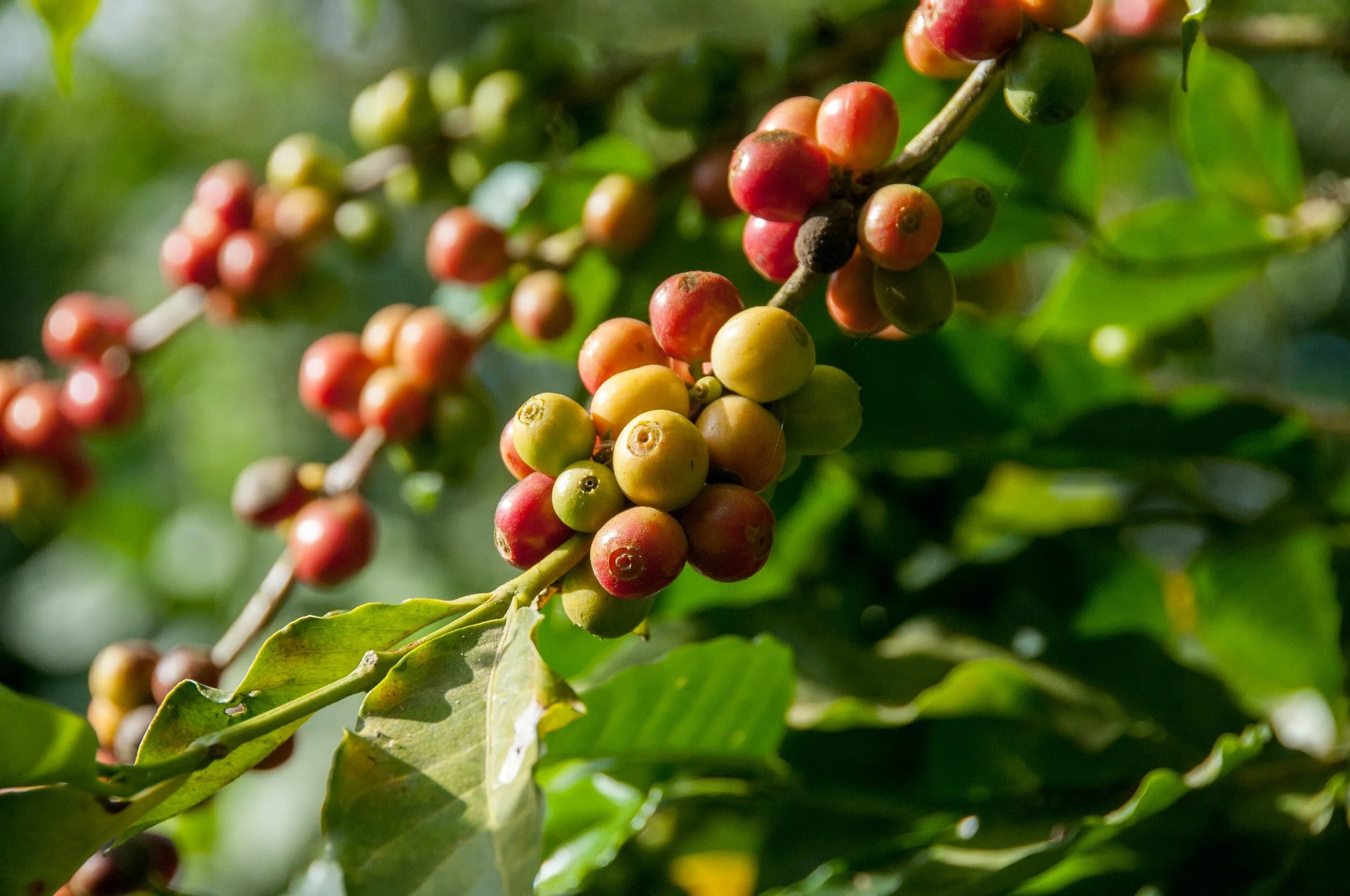
The steps to producing coffee you can drink
-
Coffee trees are planted and live up to 100 years, but they produce the best coffee between age 7 and 20.
-
Coffee trees produce berries continuously, rather than on a seasonal cycle.
-
The threes form flowers, which form green berries that turn red as they ripen. When they are bright red in color, they are ready for harvest.
-
Coffee cherries are then separated from the bean inside, which must be processed before the beans can be roasted.
-
Coffee beans are either processed in a dry or wet process of fermentation.
-
They are then dried and milled, at which point they appear greenish in color.
-
Coffee beans are then roasted in small batches and tasted for quality.
-
Next, a coffee roaster roasts large quantities to sell commercially.
-
Finally, coffee must be ground and brewed before it can be served as a drink.
Good Tasting Coffee: How to Identify Coffee Flavors
In order to appreciate the different types of coffee available, it’s important to cultivate an awareness of its unique characteristics. Let’s take a look at the way coffee connoisseurs judge different cups of coffee.

-
Aroma
The scent of a cup of coffee has a direct influence on how we perceive its flavor. As you drink coffee try to notice if the scent is smoky, fruity, earthy, spicy, nutty or grassy.
-
Acidity
One of the most defining characteristics of a cup of coffee is its acidity. This is the sharp, bright tangy quality of coffee that perks up our senses. Coffee doesn’t necessarily contain just one type of acid, either. It may contain citric acid, malic acid (fruity in flavor) or even quinic acid from stale coffee, which gives us stomach aches.
-
Body
This is the weight, thickness and texture of coffee in your mouth. The body of different types of coffee falls on a spectrum of light- to full-bodied viscosity (thin to thick).
-
Flavor
This is where comparisons come in handy and there is some overlap between aroma and flavor. Your coffee might taste bitter, sweet, savory or sour with common comparisons to chocolate, wine or fruit.

Image courtesy of Coffee and Health
Types of Coffee Beans
Coffee is the product crafted from the bean found inside the fruit of a tree whose genus is Coffea. Twenty-five species of this tree exist, though only three of them are cultivated for commercial coffee use: Coffea Arabica (Arabica), Coffea canefora (Robusta), and Coffea arnoldiana De Wild (Liberica).

-
Arabica (~60-70%)
Coffee Arabica is the most widely consumed bean for commercial production. It was originally grown in Egypt and cultivated in Yemen for commercial production of Arabic coffee. It grows best at high elevations, and often requires shade and steady rainfall to grow well. Trees are often grown on smaller farms and harvested with handpicking, which ensures a higher quality of coffee, since overripe beans are tossed out. Arabica beans create a medium bodied coffee drink with a bright acidic flavor and complex aroma.
-
Robusta (~20-30%)
Like Arabica coffee the Robusta bean also originates from Ethiopia, though Vietnam is currently its biggest exporter. It can be grown in lower elevations using a mechanical harvest. This plant is a hearty, disease resistant plant whose high caffeine content serves as a natural pesticide. Robusta coffee is lower in quality due to its pungent bitter flavor with double the caffeine of Arabica coffee. It is often used in instant coffee and coffee blends as a filler.
-
Liberica (~3%)
This bean was originally grown in Liberia on the Atlantic coast during the 1890s “coffee rust” when 90% of Arabica crops were destroyed. Now it is primarily grown in the Philippines, though it is not widely available around the world. It has a woody, uncommon flavor.
Coffee bean growing regions
The regions between the Tropic of Capricorn and the Tropic of Cancer near the Equator are the most suitable for growing coffee. Roughly 60 countries grow coffee commercially in Central and South America, Africa, Asia and the Pacific Islands.

Climate, soil and geography play important roles in giving each coffee variety it’s regionally specific flavor, which is why coffee experts trace the origin of coffee.
Here are some of the most famous types of coffee by region:
-
Kona Coffee from Hawaii
This coffee is grown in volcanic soil near the Mauna Loa volcano. The coffee trees grow in rocky soil with lots of shade and rainfall. Kona coffee is processed in a way that creates a medium body coffee known for its aroma.
-
Altura Coffee from Mexico
Mexico is one of the largest producers of coffee and most of its coffee is grown in the south. Its Altura coffee is famous for growing in high altitudes and producing coffee with a sharp, aromatic flavor popular for dark roasts.
-
Guatemalan Coffee
Coffee trees in Guatemala grow in three main regions each of which is known for its volcanic soil. Coffee from this region results in a medium-body coffee with a chocolate and spice flavor.
-
Costa Rican Coffee
Costa Rica is unique for its wet processed beans using water channels and water filled fermentation tanks for separating and processing the beans. Its eco-conscious small plantations produce high quality medium-bodied coffee with a good balance of acidity.
-
Colombian Coffee
World famous as a coffee growing region, Colombia produces superior coffee in small family farms. Well known types of Colombian coffee beans include the top grade Colombian Supremo, known for its nuanced aroma and Excelso Grade, which has sharper notes of acidity.
-
Brazilian Coffee
As the largest country growing coffee, both Arabica and Robusta are grown in Brazil and the country contains different climates for growing, so it is hard to generalize its coffee.
-
Ethiopian Coffee
As the birthplace of coffee, Ethiopian coffee trees are endemic to the region. They primarily grow in three regions within the country: Sidamo, Harrar and Kaffa. Ethiopian coffee is wet processed and has a distinctive full bodied flavor with earthy notes.
-
Kenyan Coffee
Kenyan coffee is grown on small farms that have high standards of quality in their processing and drying methods. The result is a popular sharp, fruity, aromatic coffee with a full body.
-
Ivory Coast Coffee
A common region for growing Robusta, many espresso blends come from this region.
-
Yemeni Coffee
Yemen is an ancient coffee growing region and it was the first country to commercially produce coffee and ship it around the world from its port of Mocha. Coffee from Yemen is commonly known as Arabian coffee. Ancient methods of coffee production are still in practice on terraced coffee farms with low rainfall, requiring a dry processing method. Its coffee is deep, rich and exquisite.
-
Indonesian Java and Sumatran Coffee
Indonesia is a country made of an archipelago of islands some of which are very famous for their coffee, like Java and Sumatra. Coffee trees were introduced to the region by the Dutch in the 17th century. The coffee is grown on small farms and dry processed. Known for its high quality, the flavor is often mild in terms of acidity, with a rich, full body.
-
Vietnamese Coffee
French missionaries brought Arabica coffee to grow in Vietnam in the 19th century. Today, Vietnam is a popular growing region producing balanced coffee with a hint of acidity which is often used for blands.
Types of coffee roasts
Coffee roasting techniques vary in temperature and length giving beans a variety of light, medium and dark roasts.
Lighter roasts preserve more of the flavor of the coffee bean origin, in terms of its earthy, grassy and acidic qualities, while darker roasts bring out the smoky, dark and roasted flavor from the heat. Darker roasts are also used in mass produced coffee because they have a lower moisture content, so they’re easier to ship.
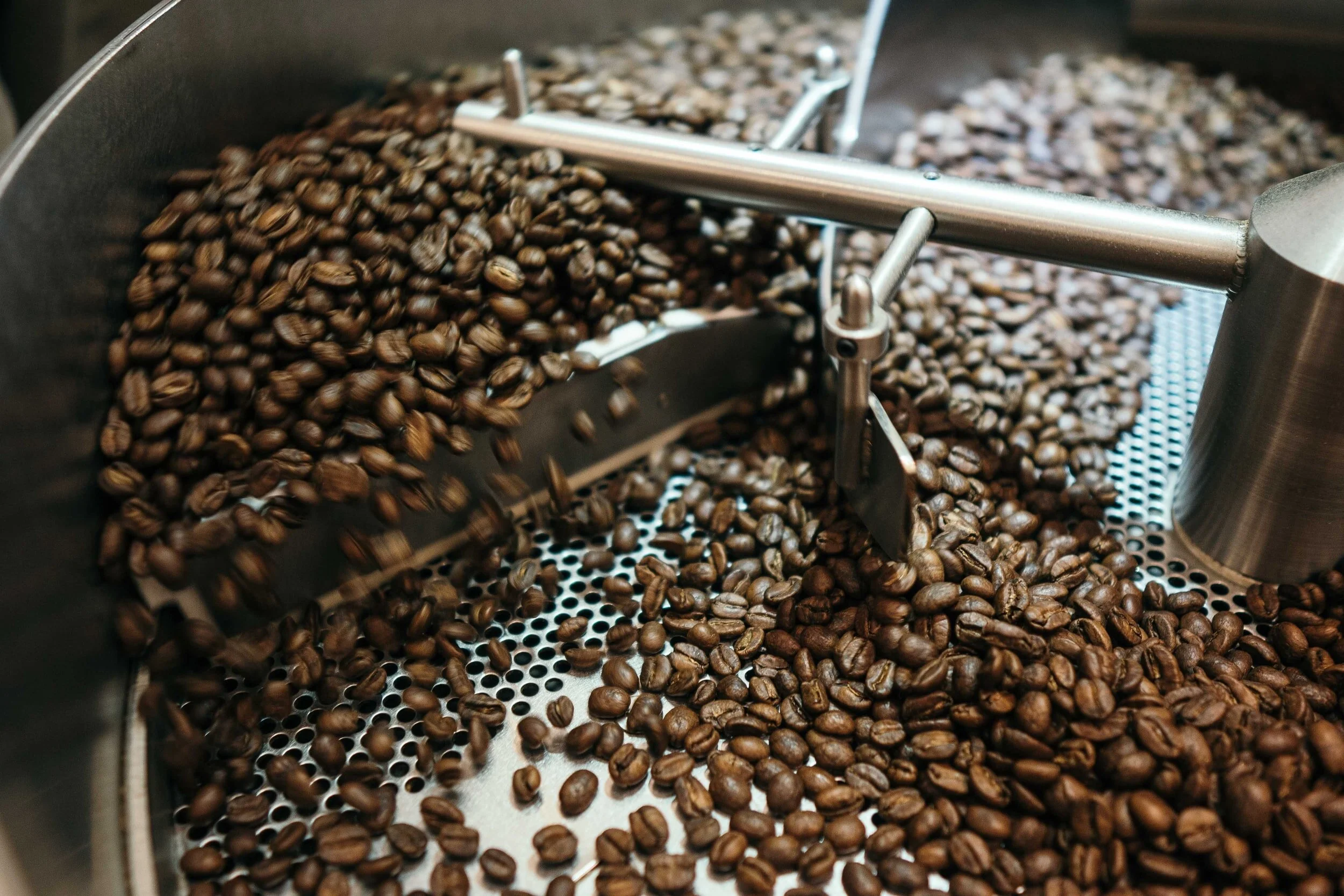
Here are some common roasts for coffee beans:
Light roasts
Higher overall in acidity and caffeine content.
-
Cinnamon roast - 196°C (385°F)
-
New England roast - 205 °C (401 °F)
Medium roast
Balanced in flavor.
-
American roast - 210 °C (410 °F)
-
City roast - 219 °C (426 °F)
Dark roast
Low acidity and no hint of origin flavor. Has a strong roast flavor.
-
Dark roast temperature 225 °C (437 °F)
Types of coffee grinds
For the freshest tasting cup of coffee, it is important to grind the coffee close in time to when you brew your coffee. This is why pre-ground coffee from the store can often taste stale.
In terms of flavor, larger grinds tend to have less flavor, while smaller grinds result in a bitter taste. It is important to aim for a consistent texture, which is best achieved with a burr or a mill grinder. Most home grinders use blades, which don’t achieve the best consistency.
Some coffee drinks such as Espresso and Turkish Coffee require a smaller grind than regular coffee. This infographic shows the best grind size based on the brewing method you’ll use.
Types of coffee brewing methods
There are a wide range of coffee brewing methods available which each use different equipment. Before you brew your coffee, it is important to make sure that your coffee equipment is clean and free of old coffee grinds and residue, which can negatively impact the flavor.
However, a lot of variables beyond the specific tools you use to brew your coffee impact its flavor and quality such as the water temperature, water source (tap versus filtered), the freshness of your coffee, the consistency and size of the coffee grind, the coffee-to-water ratio, and the brewing time.
Here are the most popular coffee brewing methods:
-
Moriondo Bean-to-cup
Read about our Moriondo Coffee Machine Bean-to-Cup method of making sustainable coffee. A Moriondo Coffee membership provides you a coffee machine that instantly grinds your coffee and produces a fresh, delicious cup of espresso and other Italian coffee drinks in 90 seconds.
-
Drip Coffee Maker
An electric drip coffee maker is a standard method for brewing coffee at home. They first became available on the market in the 1950s. To brew coffee using this method, place the coffee grounds in the filter, the electric machine heats up the water, which is siphoned to the top of the pot. The water is then gradually poured over the coffee, which then drips through the filter into the pot below. This method is efficient and similar to the pour over method, but you lack control over the water temperature and rate at which you pour the water through the grinds.
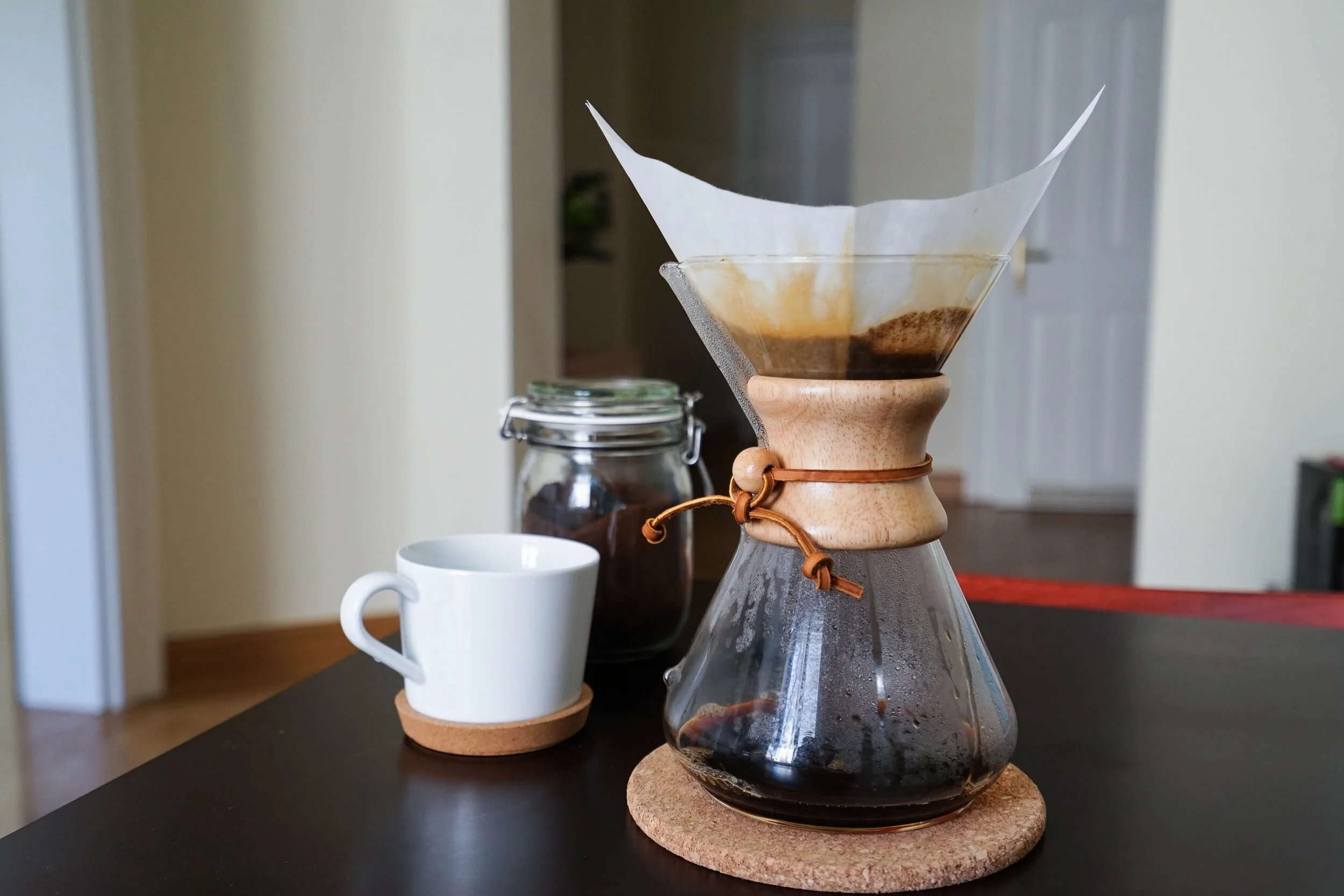
-
Pour over
The pour over method is basically the manual equivalent of drip coffee. Using a paper disposable filter in a pour over vessel such as a Chemex pot or a ceramic filter holder placed over your coffee cup. You heat the water to about 205 degrees F and pour it in a circular motion over the grinds in intervals over the course of about three minutes. With each pour over the grinds, the coffee should rise and expand. This allows the coffee’s flavor to be extracted more fully. The resulting flavor from the infusion tends to be brighter and more pronounced than the flavor from an electric drip coffee machine. Plus, you can experiment with the timing and water temperature with this method to achieve the perfect cup of coffee.
-
French Press
A French press is a sieve used to press down the coffee grinds in a pot of coffee. You place the coffee grinds in the French press pot and then pour water over the grinds. Without waiting very long, you then insert the press and push the grinds to the bottom of the pot. The remaining liquid at the top of the pot is ready to drink. This method produces coffee with excellent flavor.

-
Moka Pot
A Moka pot draws the steam of boiling water through a cup containing the coffee beans, so that the coffee emerges at the top of the pot. The resulting coffee is thick like an espresso and can be watered down to create an Americano-like cup of coffee.
-
AeroPress
This is a manual device which presses water through coffee grinds using air pressure to create a cup of coffee.
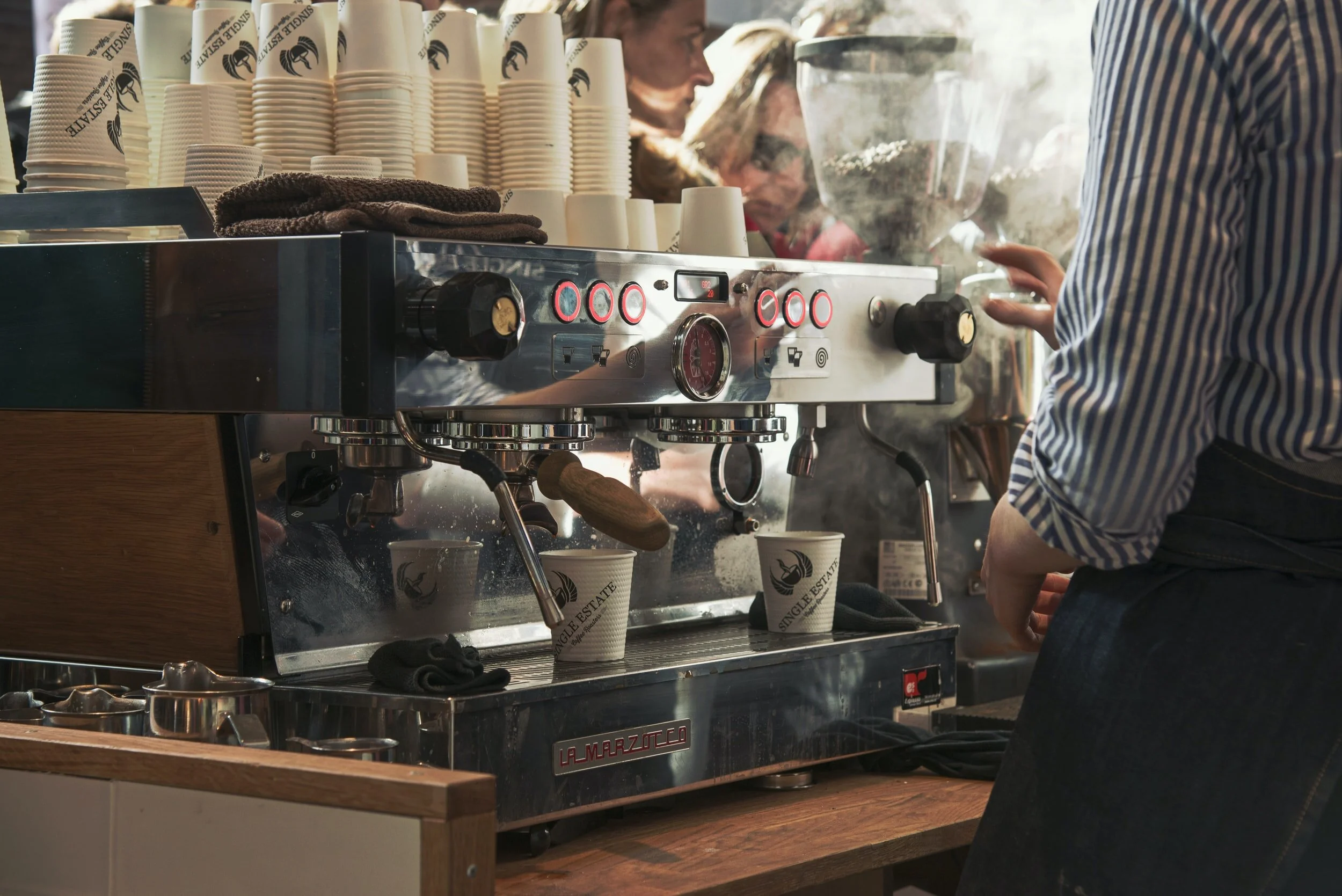
-
Espresso
Espresso is a fast method for serving coffee, which requires a machine to push pressurized water through a metal filter containing the coffee grounds.
-
Pod filtration
Electric pod machines have become popular in households for creating an instant cup of coffee. You insert a capsule containing grinds into the machine, which pierces the capsule and forces water through the grinds to pour a cup of coffee.
-
Instant Coffee Powder
Coffee grounds are freeze dried or spray dried and they dissolve into a cup of coffee when mixed and stirred with hot water. The coffee used in instant coffee is low quality, which impacts the flavor.
How do you like your coffee?
However you prefer to drink your coffee, one thing is clear: quality influences flavor greatly. By ordering a coffee membership from Moriondo Coffee, you’ll ensure a high quality, consistent range of coffee drinks because our coffee machine (included in the membership) grinds the coffee instantly for each cup. Learn more about our coffee types and check out our reviews.
Sources for this article:
https://www.roastycoffee.com/coffee-types/
https://www.ncausa.org/About-Coffee/How-to-Brew-Coffee
https://www.ncausa.org/About-Coffee/Coffee-Around-the-World
https://nationalcoffee.blog/2016/01/28/grounds-control/
https://medium.com/@thebeginner/the-beginners-guide-to-coffee-f11ee4fd46f9
https://www.coffeeandhealth.org/all-about-coffee/aroma-and-flavour-descriptors
Good Tasting Coffee: How to Identify Coffee Flavors

In order to appreciate the different types of coffee available, it's important to cultivate an awareness of its unique characteristics. Let's take a look at the way coffee connoisseurs judge different cups of coffee.
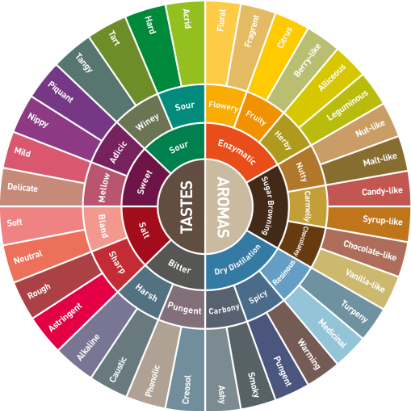
Aroma
The scent of a cup of coffee has a direct influence on how we perceive its flavor. As you drink coffee try to notice if the scent is smoky, fruity, earthy, spicy, nutty or grassy.
Acidity
One of the most defining characteristics of a cup of coffee is its acidity. This is the sharp, bright tangy quality of coffee that perks up our senses. Coffee doesn’t necessarily contain just one type of acid, either. It may contain citric acid, malic acid (fruity in flavor) or even quinic acid from stale coffee, which gives us stomach aches.
Body
This is the weight, thickness and texture of coffee in your mouth. The body of different types of coffee falls on a spectrum of light- to full-bodied viscosity (thin to thick).
Flavor
This is where comparisons come in handy and there is some overlap between aroma and flavor. Your coffee might taste bitter, sweet, savory or sour with common comparisons to chocolate, wine or fruit.
Related Posts




